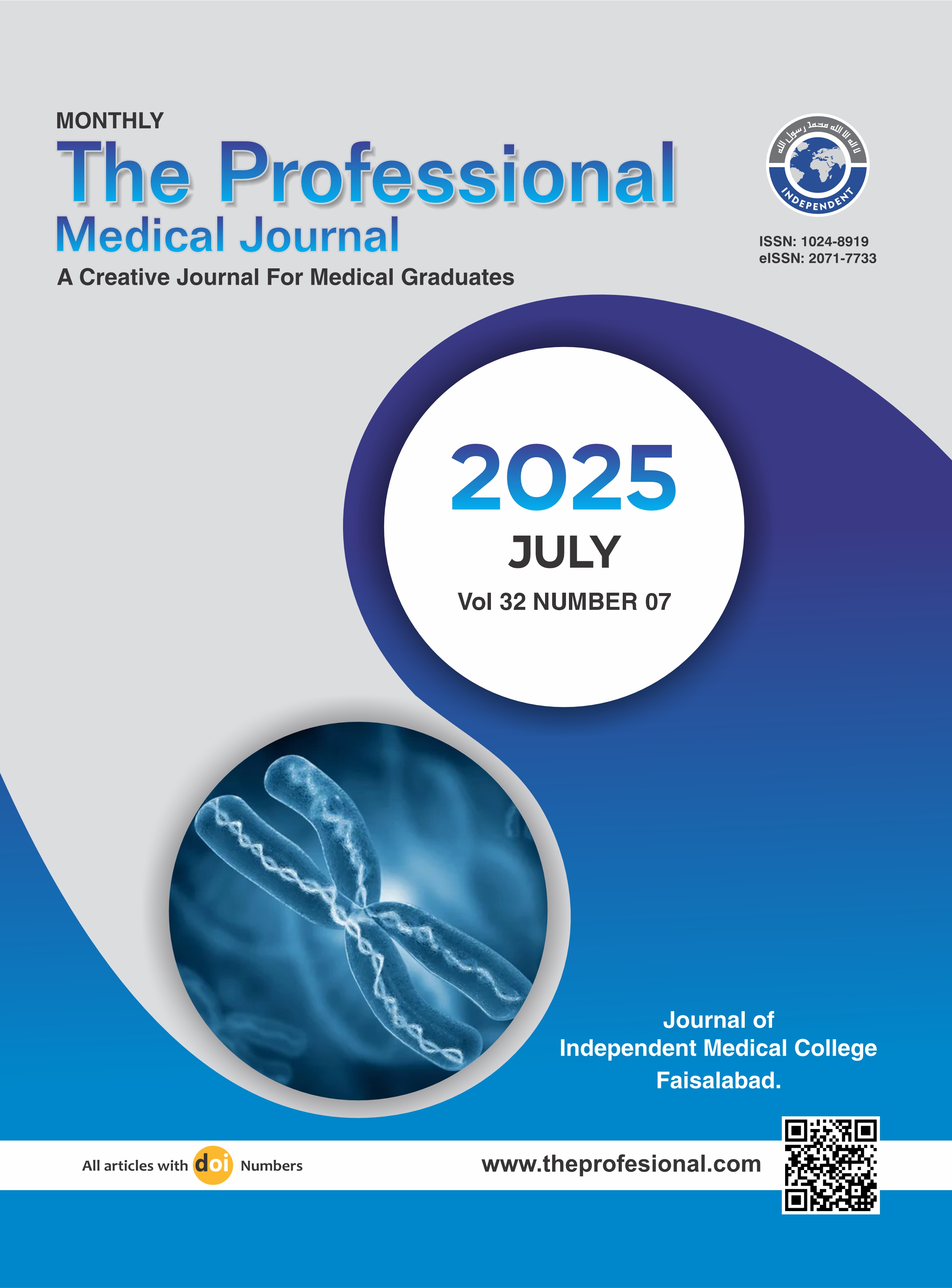Clinical profile and outcome of Guillian Barre Syndrome in children.
DOI:
https://doi.org/10.29309/TPMJ/2025.32.07.9341Keywords:
Guillian Barre Syndrome, Inotropes, Intensive Care Unit, Limb, Ventilatory Support, WeaknessAbstract
Objective: To evaluate the clinical profile and outcome of Guillian Barre Syndrome (GBS) in children admitted in a tertiary care hospital. Study Design: Cross-sectional study. Setting: Department of Pediatrics of National Institute of Child Health, Karachi, Pakistan. Period: July 2024 to December 2024. Methods: A total of 45 children aged between 1 month up to 16 years, presenting and admitted with GBS were analyzed. Demographical and clinical characteristics of children were noted. Children were treated as per standard institutional protocols. Final outcome was recorded as survived or expired. Effect modifiers were controlled through stratification, and post-stratification chi-square/fisher’s exact test was applied taking p<0.05 as significant. Results: In a total of 45 children, 27 (60.0%) were males. The mean age was 6.27±2.49 years. The mean duration of symptoms was 3.6±2.7 days. The most common presentations were weakness of limbs, and fever, documented in 38 (84.4%), and 24 (53.3%) patients, respectively. Nerve conduction velocity evaluation revealed AMSAN as the most common GBS subset, found in 32 (71.1%) patients. Mortality was observed among 10 (22.2%) children, while the remaining 35 (67.8%) children improved and discharged successfully. Mortality was significantly associated with admission in PICU at the time of enrollment (p<0.001), need for ventilatory support (p<0.001), and inotropic support (p<0.001). Conclusion: Lower limb weakness and fever emerged as the most common initial symptoms, with AMSAN being the predominant subtype. Mortality was significantly associated with PICU admission, need for ventilatory support, and inotropic support.
Downloads
Published
Issue
Section
License
Copyright (c) 2025 The Professional Medical Journal

This work is licensed under a Creative Commons Attribution-NonCommercial 4.0 International License.


